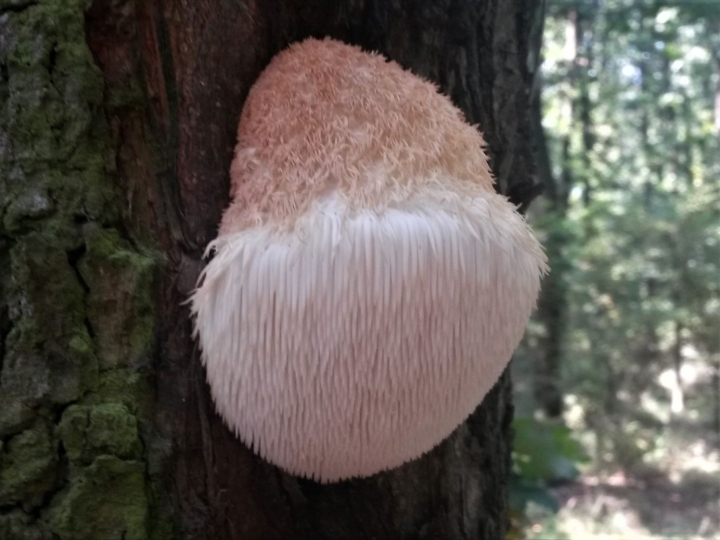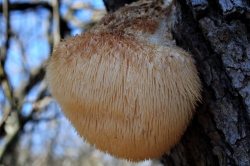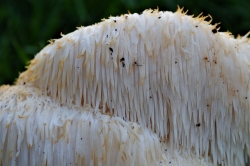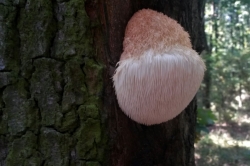A Europe-wide but rare and unique looking mushroom. One of the four species listed in Schedule 8 of the Wildlife and Countryside Act (1981). It is illegal to pick or even cut samples so photos only if you are lucky enough to find one. All the specimens that weren’t grown from kits were collected abroad, none of the wild fruit bodies were collected in the UK.
Home / Mushroom Guide /
Lion’s Mane
Lion’s Mane
| Mushroom Type | |
| Common Names |
Bearded Tooth (EN), Lion’s Mane (US), Pom Pom mushroom (US), Pigau Barfog (CY), Soplówka Jeżowata (PL), Süngomba (HU) |
| Scientific Name |
Hericium erinaceus |
| Season Start |
Jun |
| Season End |
Oct |
| Average Mushroom height (CM) | |
| Average Cap width (CM) |
Please note that each and every mushroom you come across may vary in appearance to these photos.
Fruiting Body
Typically spherical. White to cream coloured when young, yellowing then browning with age. The fruiting body is formed of 2–5 cm long, pendant spines.
Spines
2–5 cm long, white to cream, pendant, growing in clusters. The spines are very soft and fragile.
Possible Confusion
It could be confused with other members of the same genus, i.e. Tiered Tooth (Hericium cirrhatum), and Coral Tooth (Hericium coralloides), in Europe, or Bear’s Head (Hericium americanum) in the US, which was also called Lion’s Mane until recently.
Spore Print
White. Ellipsoid to almost spherical (subglobose), their surface is punctate.
Taste / Smell
It is an excellent, choice edible species with a mild crab or lobster-like smell and taste but due to its legal protection, do not forage it in the UK (or anywhere else where it is protected)!
Frequency
Very rare in the UK, and protected by law (at the highest level). If you are lucky enough to have found one, please record it via the regional branch of BMS or one of the known recording apps/platforms.
Other Facts
It is a valued culinary mushroom and a well-known medicinal mushroom with many well-documented health benefits (you can read more about them here).
Because of the growing interest about this species, commercial strains are available for cultivation. Please note that most of them are from a foreign origin. Without taking sides, the potential environmental risks of foreign strains are still subject of heated scientific discussion.
In March 2025 the IUCN (International Union for Conservation of Nature) added 1000 fungal species to the IUCN Red List of Threatened Species. The IUCN (Global) Conservation Status of Lion’s Mane (Hericium erinaceus) is: LC – Least Concern, with decreasing population. For more information, see on the following link.



 (39 votes, average: 3.69 out of 5)
(39 votes, average: 3.69 out of 5)

























Leave a Reply